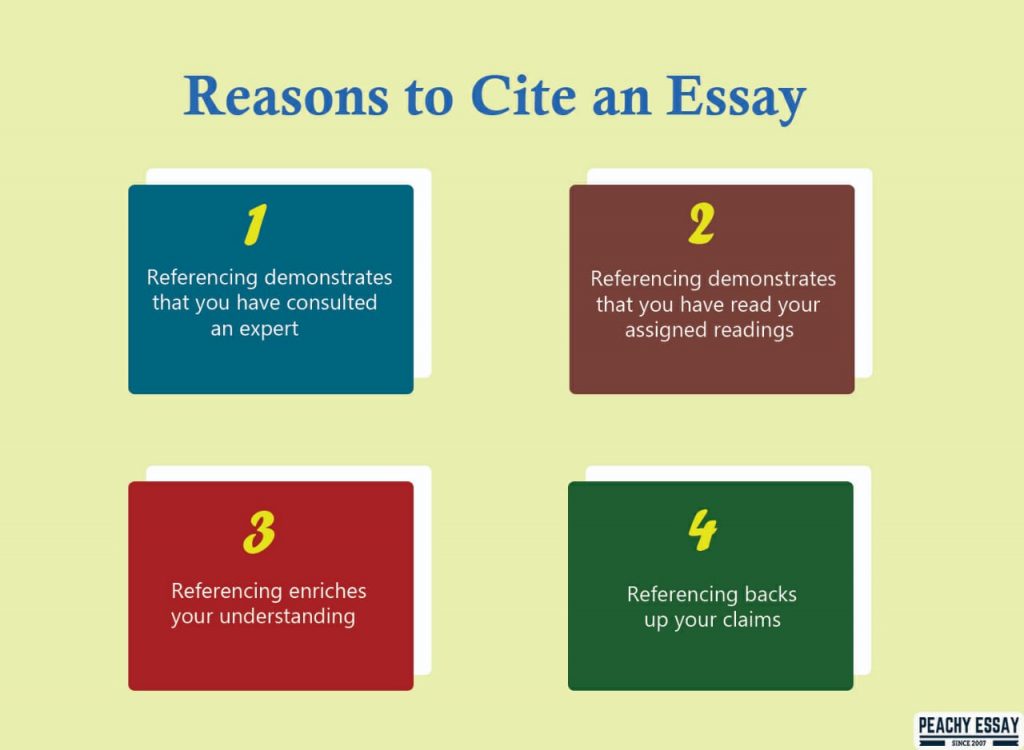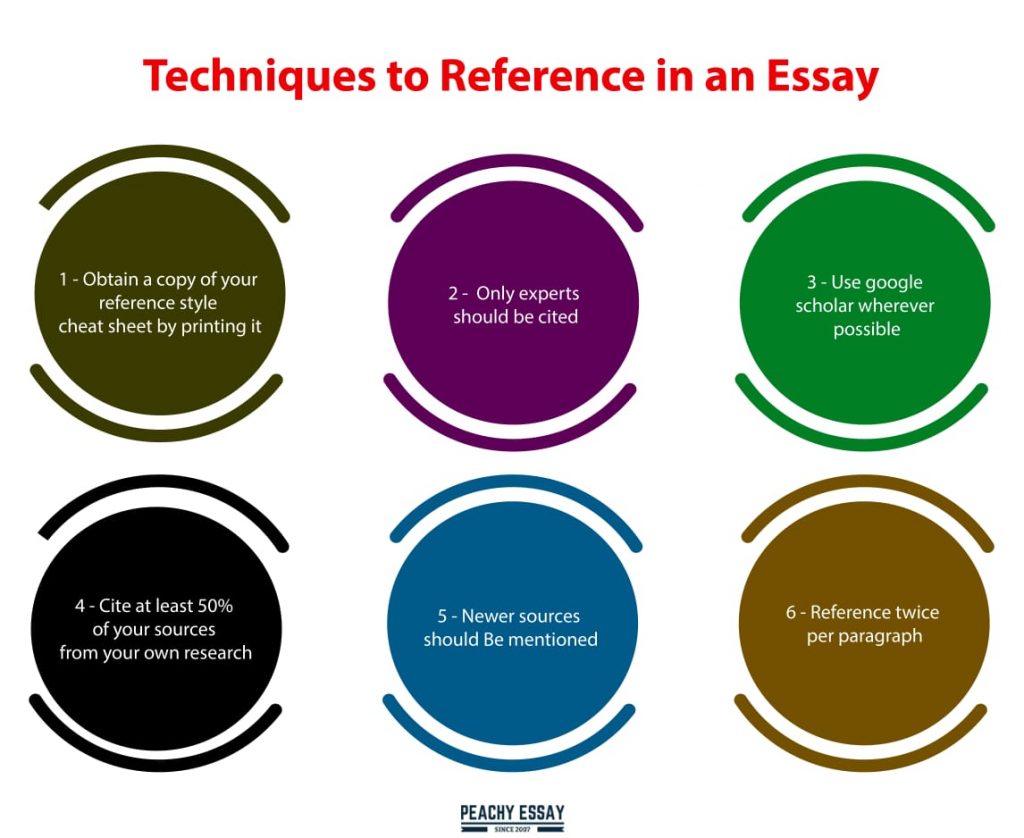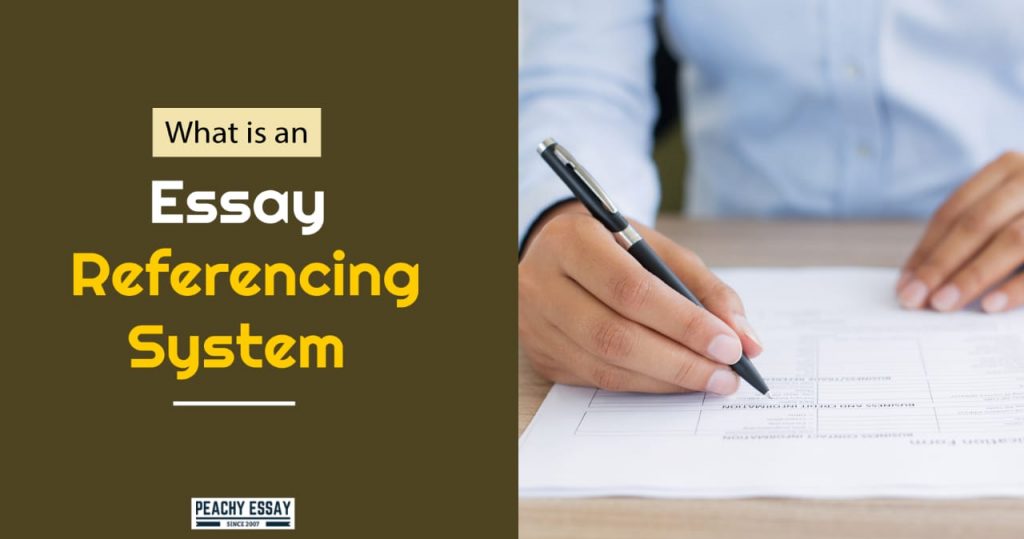When producing any written academic work, whether it is an essay, a dissertation, or a review, it is critical to have a clear essay reference system. However, the choice may already have been made for you: certain magazines demand that their work be acknowledged in a particular manner, while other institutions or faculties compel students to adhere to a given method of recognition. Having a fundamental knowledge of all of the major essay reference systems, however, may be helpful.
What is an Essay Referencing?
Making use of citations in your writing is a technique that allows you to acknowledge the contributions and efforts of others in your work. Allusions to the words, facts, and ideas of others differentiate academic writing from other types of writing.
All academic works must include references, which are mandatory in most cases. Plagiarism is a serious academic offense, and proper referencing safeguards you against it. Plagiarism is defined as the act of appropriating another person’s words or ideas and passing them off as yours.
Why Reference an Essay?
The following are some of the reasons why you should cite an essay.

Referencing demonstrates that you have consulted an expert
You can’t simply create an essay based on your assumptions. This is a big blunder for new pupils.
University essays are intended to demonstrate that you’ve acquired fresh knowledge by reading expert views.
When you include a citation in a paragraph, you’re indicating that the material you’re providing was given to you by a professional. To put it another way, it implies you sought the advice of an expert to supplement your knowledge.
If you include citations throughout the essay that connects to a range of expert views, you’ll demonstrate to your reader that you really listened to what the experts had to say and evaluated their thoughts.
Referencing demonstrates that you have read your assigned readings
Between courses, your instructor will most likely assign you academic journal articles or book chapters to read. Those required texts may have even come up in your seminars and tutorials.
As a result, reference the required readings to demonstrate to your instructor that you read the academic papers you were given. It will assist you in improving your grades.
Referencing enriches your understanding
Okay, so you’re aware that you’ll need to cite sources to demonstrate that you consulted experts on the subject.
But there’s a lot more to it. There is a genuine advantage to your education.
You’re pushing yourself to acquire two distinct bits of expert information if you force yourself to reference two expert sources in each paragraph. This will broaden your horizons!
As a result, don’t regard reference as a vanity exercise to assist you in getting better grades. Consider it a chance to get a better knowledge of the subject!
Referencing backs up your claims
You may believe you already know a great deal about the subject and are prepared to share your vast knowledge with your instructor.
The Best Ways to Reference in an Essay
Let’s get started with our best tips for referencing in an essay! These are techniques you’ve probably never heard before. They may be used by anybody, from beginners to experts. Let’s get this party started:

Obtain a copy of your Reference Style Cheat Sheet by printing it
Referencing is difficult and time-consuming. You must know where to use italics, where to put commas, and whether or not to use an initial for an author’s complete name.
There are many things to consider.
The bad news is that automatic reference applications and websites almost never get it right! They claim to be able to create the citation for you. The simple truth is that they can’t!
The easiest method to obtain proper referencing is to follow these steps: Download a reference cheat sheet and keep it with you while you write your paper.
The kind of reference you should use should be specified in your task plan. APA Style, MLA Style, Chicago Style, Harvard Style, Vancouver Style, and many more are examples of different styles.
You must first choose the style you must use and then obtain your cheat sheet. By entering the following into the google bar, you may get a cheat sheet:
Your institution may also provide you with a cheat sheet. Download the reference style cheat sheet in pdf format, print it and keep it on your pinboard or by your side while you write your essay.
Only experts should be cited
In an essay, there are excellent and poor sources to reference.
Only professional-authored, peer-reviewed, and edited reference sources should be used as sources of information. Having the capacity to find trustworthy information shows your initiative and resourcefulness. You haven’t simply copied and pasted content from another blogger’s blog. You’ve done some research. You didn’t receive your information from the local media, did you? Instead, you gained information from someone who is a genuine expert on the subject matter that you were studying.
Use Google Scholar wherever possible
Google Scholar does a better job of locating the sources you’re looking for. This is because it analyzes the whole article abstract to determine whether it is related to your search terms. Most university search databases, on the other hand, depend only on article titles.
Cite at least 50% of your sources from your own research
It is suggested that you begin with the prescribed readings and extract as much information as possible, then use Google Scholar to locate other sources.
So, if your essay contains ten citations, a decent balance is five assigned texts and five independent reads.
Newer sources should be mentioned
In general, the more recent the source, the better.
As a general rule of thumb, most teachers believe that using materials within the past 10 years is the best practice whenever feasible. However, every now and again, you come upon a great source that is 20, 30, or 40 years old and has not yet been published. Unless they are deemed “seminal texts,” these sources should only be mentioned when they are. A seminal book is one that was written by a real titan in your profession and had a significant impact on the field as a whole.
Here are some instances of important writers whose old writings, despite their age, you would be able to cite:
Weber, Marx, and C. Wright Mills are all sociologists.
Sigmund Freud, Carl Rogers, and Carl Jung were all psychologists.
Ensure that 80% of your sources are up to date.
Reference twice per paragraph
In the body of the essay, provide two citations in each paragraph.
The use of references in the introduction and conclusion is optional. In every other paragraph, however, strive for two citations.
Your total number of sources should be at least 1 every 150 words.
Of course, you may reference the same source several times throughout the essay. In the second, fourth, and fifth paragraphs, you may reference the same source. That’s OK.
You don’t want your whole essay to be dependent on a small number of sources, however. You want your marker to see that you looked into a variety of sources to get knowledge on the subject. When arriving at your findings, your marker wants to know that you considered a variety of viewpoints.
One source mentioned in the reference list every 150 words is a decent rule of thumb.
The reference list’s components
The bibliography lists the sources that were used in the work, along with their publication dates.
Unless a numbered reference style is used, the sources are presented in the reference list in alphabetical order (after the authors’ last names). Under their title, anonymous works are often mentioned.
Is it a reference list, a bibliography, or a list of works cited?
Depending on the reference style, the list is referred to as ‘References,’ ‘Works Cited,’ or ‘Bibliography,’ among other things. Because there are some differences in how these terms are employed, it is essential to adopt the one suggested by the reference style and to adhere to its structure as much as possible when writing.
The phrases ‘bibliography’ and ‘list of references’ are often used interchangeably with the terms ‘works referred’ and ‘works cited.’ The following is the difference between the two: a bibliography may include books that were used in the production of the text even if they are not mentioned in the text, while a list of references or works cited list includes only the sources that are mentioned in the text.
If the phrase ‘annotated bibliography contains the word ‘annotation,’ it means the text has been augmented with explanatory notes, comments, or other kinds of extra information.
The components of a reference list are shown below.
Author
Depending on the reference style used, the author of the book/article/etc. is recognized by his or her last name and first name(s) or initial(s).
In the case of several authors, reference styles specify how their names should be listed. After the first writer, some styles list all authors in last name-first name order, while others reverse the order.
The authors should be listed in the order in which they appear in the source. The writers’ names are sometimes arranged alphabetically and sometimes according to their degree of participation; in the latter instance, the primary author’s name will appear first.
Title
The manner in which titles, especially article names, are copied differs across different reference formats. When writing in English, book,, and journal titles are often capitalized and italicized; however, article titles are not always capitalized and are not usually put within quotation marks. Capitalization and quote marks may be required depending on the style, whereas some recommend not using capitalization or quotation marks.
Volume/Issue
Periodical publications, such as academic journals, are released in installments called issues on a regular basis. A volume typically contains the issues released over the course of a year, although the duration of publication may vary.
When creating a reference list, authors must follow the chosen format; most reference styles need the title of the article and journal and the volume of the journal (or book, if it is a multi-volume publication) and, sometimes, sometimes, a multi-volume publication, the issue.
Publication location
The location (city) of publishing should be mentioned when books are included in the reference list. After the name of the city, a two-letter abbreviation of the state’s name is often appended in references to US publications.
If the location of publishing is situated outside of the United States, certain publishers and reference styles in the United States suggest that the nation be given.
Publisher
When books are included in a reference list, the publishing house’s name appears after the date of publication. The acronym UP (for University Press) is occasionally used when the business is a university press.
It’s worth noting that the publisher isn’t included in journal article entries.
Editor
If the source is a text included inside an edited book (such as a chapter in an anthology), it should be mentioned under the author of the text used, not the editor’s name. However, the editor’s name should be included in the bibliographic record. See the relevant reference style for further details.
Publication date
The year of publication should be mentioned in the bibliographic post, whether it is a book or an essay. If there are several editions and prints, the year of the referenced source should be utilized. Some reference styles also need edition information (for example, ‘2nd ed.’).
If the source is a journal article, add the volume number (and, in certain cases, the issue number) in the reference list. These are written in a variety of ways depending on the style; some reference styles use strong font for the volume number, while others use italics or no emphasis at all.
Url/DOI/Provider
Many sources are accessed electronically, and certain reference styles, but not all, need the source’s URL (internet address). To prevent complex web addresses, some reference styles now suggest using a DOI (document object identifier) or the article provider instead of the online address in bibliographic posts.


